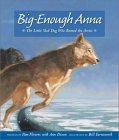
ORDER
Big-Enough
Anna:
Little Sled Dog that
Braved the Arctic
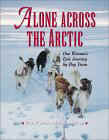
ORDER
Alone
Across
The Arctic
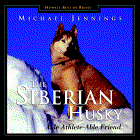
ORDER
The
Siberian Husky
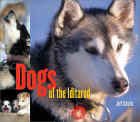
ORDER
Dogs
of
the Iditarod

ORDER
Yukon
Alone
READ A
REVIEW OF
Yukon Alone

ORDER
The
Last
to Great Race
or visit our
BookShelf

For more
Sled Dog Books
CLICK HERE

ORDER
Race
Across Alaska

ORDER
Running
North

ORDER
Peak
Performance
|
Pam Flowers was born in Sault Ste. Marie, Michigan, and was introduced to the
beauty of the Arctic in a school program when she was 11 years old. She is a graduate of the National Outdoor Leadership School, Lander,
Wyoming, and has numerous sled dog expeditions to her credit. In 1991, Outside
magazine named her an "Outsider of the Year," and in 1996 the Society of Woman
Geographers awarded her their Gold Medal.
Today Flowers raises and trains sled
dogs in Talkeetna, Alaska, and travels to speak to children. I was fortunate to meet Pam
during a visit to Alaska several years ago, and am delighted she agreed to this interview
with WorkingDogWeb.
Barbara Petura: When and where did you first get behind a
sled dog team, and what was your reaction?
| Pam Flowers: The first time I got behind a
sled dog team was in Washington state. It wasn't a very good experience because the guy
had a really bad temper. So I headed for Alaska and stayed with Earl and Natalie
Norris in Willow, Alaska, for a year. That was one of the best experiences of my life.
They treated their dogs well, had lots of equipment and I learned how to be a good dog
musher. |
|
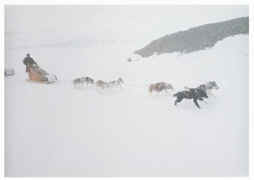
Pam and her team
|
Barbara: When did you get your own first sled dogs? What kind
were they and what breeding lines did they come from? Did you breed the dogs that took you
on your various treks?
Pam: I bought five dogs from the Norrises
which were, of course, Siberians. That was the beginning of my kennel. The next year, two
of Norrises dogs produced an accidental litter of four puppies -- the mother was Siberian
and the father an Eskimo dog. They weren't the kind of dogs that many mushers would want.
However, I jumped at the chance to buy them and got exactly
what I hoped for: the brains of a Siberian and their willingness to work and the tough
feet and thick coat of the Eskimo, perfect for Arctic expeditioning. Getting those puppies
was the best decision I ever made when it came to acquiring new dogs. Those dogs had
puppies with some of my dogs and they had puppies, and those three generations of dogs
made up my team that went across the Arctic with me.
Barbara: Before your major expedition across the North
American Arctic from Point Barrow to Repulse Bay, you completed several other major treks
by dog team. What were they, and how did they prepare you for the big trip?
| Pam: I completed the Iditarod in
1983 and that was great fun because there is always a trail, lots of friendly people at
checkpoints and villages, and great sportmanship on the trail. It was the last trek I made
with my dogs where there was a trail. After that I sledded to the Magnetic North Pole
twice, along the coast of Alaska from Kotzebue to Barrow to the Canadian border, 135 miles
north out onto the Arctic Ocean and a lot of smaller treks. |
|
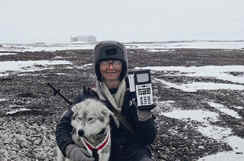
Pam and Anna in the Arctic with
satellite navigation gear
.
|
There was a lot more challenge to
each of those journeys than there was on the Iditarod. Just having to find your way with
no trail slows you down about one mile per hour. Battling broken sea ice piled up five to
twenty feet high and trying to get a heavy sled through can be pretty demanding and very
hard work for the dogs and me. You have to figure out how to get your supplies to where
they need to be, and, of course, you have to very self-sufficient because nobody is going
to be sledding by or flying over you when you are in the extreme north, alone in the
wilderness. But I love those challenges.
Barbara:
What gave you the idea
specifically for the 2,500-mile expedition across the Arctic?
Pam: For several years I had
been doing shorter treks while on vacation from my job as a respiratory therapist. I'd
pool all my vacation and holiday days together and take a little extra time off without
pay so I could stay out there in the Arctic with my dogs as long as possible. But it was
never long enough and I never wanted to go home.
Then I read a book by Knud Rasmussen, who
together with two Greenland Natives, a woman named Anarulunguaq and a man named Metiq,
crossed the Arctic going east to west 2,500 miles from Repulse Bay, Nunavut, to Barrow,
Alaska. I was inspired and decided that was the trek for me and my goal was to retrace
their route as closely as possible.
Barbara: Your book, Alone Across the Arctic, is filled
with your many exciting adventures. Is there one that stands out for you in terms of your
relationship with your dogs?
Pam: Yes, and when I look back on it, this little story seems like such
a small event. One day we sledded out of Tuktoyaktuk, NWT, with a very heavy sled and the
ice fog was so bad that we kept getting lost. I was anxious to make good time and was
asking much of the dogs. The next day they went on strike and refused to pull. I was
really upset at first because it was a beautiful day and we needed to make miles.
But when a team goes on strike, it
really is time to stop and examine what you are doing. My dogs, like most sled dogs, are
honest and hard working. So I looked at them and decided we needed a little vacation. I
unharnessed everyone and we ran and ran and played tag, napped and snacked all day long.
It was such a beautiful day and we all had so much fun and really enjoyed ourselves. The
next day they were back at work. It was a good decision to take that break.
Barbara: What inspired you to write your
children’s book about Anna, one of the dogs on your expedition?
| Pam: I talk to kids in schools all over the country. The book, Alone
Across the Arctic, was written for upper grades and adults and I felt badly that the
little kids didn't have a book they could read themselves. I also noticed they really
identified with my dog, Anna, because she was small and young and no one thought she could
do much. When you are five or
six years old you spend a lot of time showing people you are not too small or young to do
things. Anna was a hero and helped save the expedition so she was the perfect role model
dog to write a young children's book about. No matter how many books I write, no book will
ever mean as much as Big Enough Anna does. The cover looks just like her - beautiful,
elegant, and gutsy. |

ORDER
Big-Enough
Anna: Little Sled Dog that Braved the Arctic
|
Pam: There are two things.
First, I try to emphasis that my dogs and I had to work together as a team and treat each
other with manners and courtesy. Even dogs need manners to get along together in life.
Second, I tell them to pick a dream and go
after it. Dreams are what keep you going when things get rough in life. They give you
something inside your head to hang onto no matter what is happening to you. It's ok to
change your dream, just have one.
Barbara: How can a school or library or other group arrange
to have you come for a presentation and visit?
Pam: The best
way is to email me at pam@pamflowers.com They can also visit my website -- www.pamflowers.com -- and see lots of great
information there.
Barbara: Do you have any plans -- or dreams -- for entering a
long-distance race such as the Yukon Quest or any other sled dog adventures?
Pam: I don't enjoy racing. It's
great sport but I really prefer doing expeditions.
Barbara: What did I forget to ask? Is there something
else you would like to share with WorkingDogWeb visitors?
Pam: My dogs and I have traveled
ten of thousands of miles together and one of the things I am most proud of is that we
have always come home alive and together. We haven't always succeeded at the goals I set,
but my dogs have given me more pleasure than anything else on earth.
Pam Flowers
was interviewed via e-mail by
Barbara Petura, Webmaster, WorkingDogWeb.com
in January 2004. Thanks, Pam!

More Sleddogs @ WorkingDogWeb
.
|
